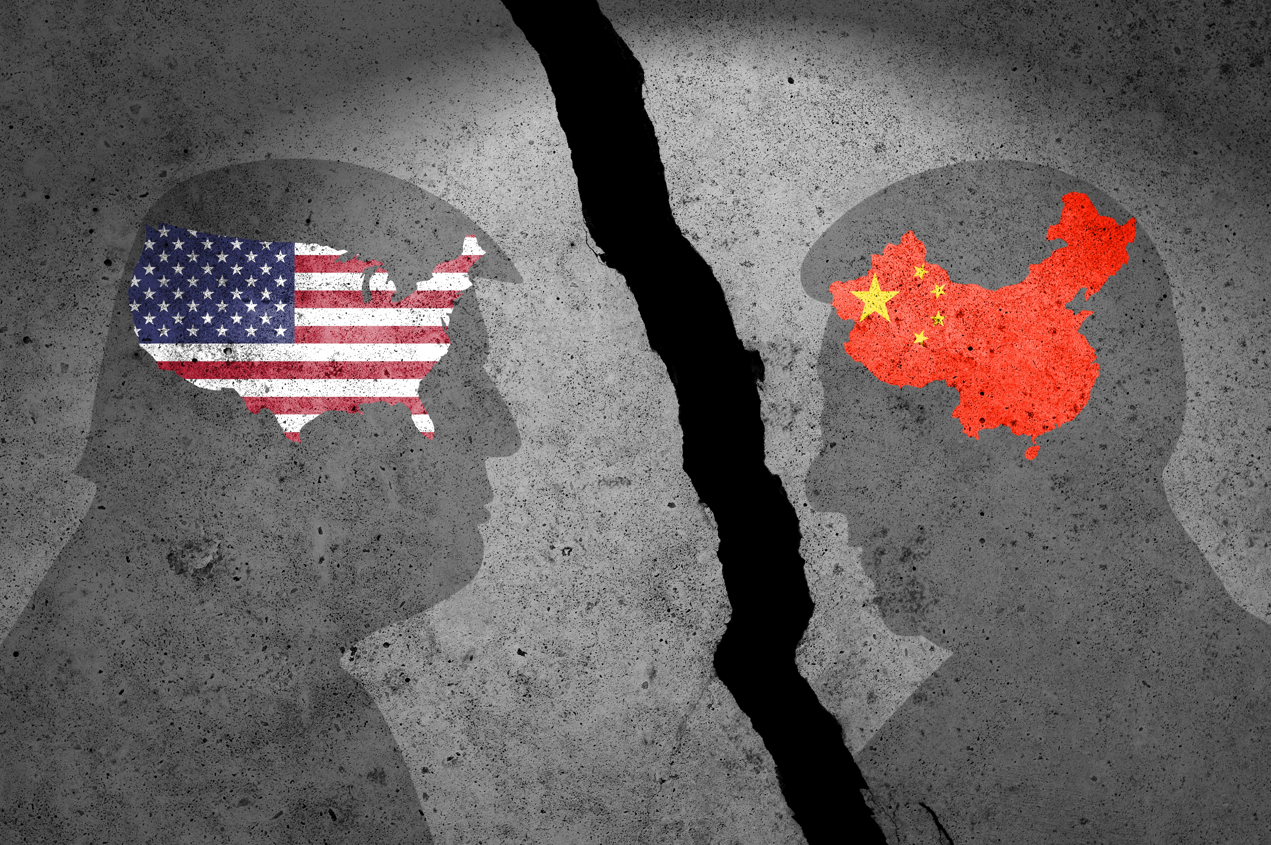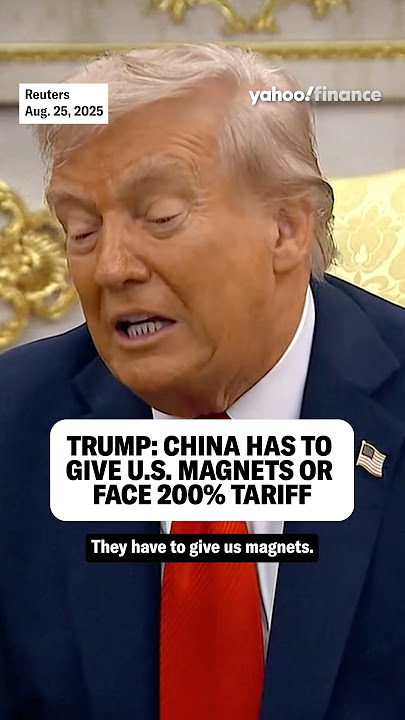Conventional thinking would assume the Trump administration’s haphazard approach to China will become an articulated stance at some point, but the U.S. president is anything but conventional.

It would be an understatement to describe the past six months of Sino-American relations as a bizarre roller-coaster.
Indeed, as I had written last November, U.S. President Donald Trump’s China policy could be “best likened to Russian roulette” – swayed and shaped by competing considerations and rival factions, just as his first term, but with a far higher degree of alignment between his personal whims and governmental policies. It would be difficult – and frankly unrealistic – to seek predictability and consistency in the outward manifestation of the Trump administration’s China policy.
In April, Trump raised baseline tariffs on China to a staggering 145%, whilst Chinese tariffs on American goods reached 125%. Yet with China’s overt weaponisation of rare earth exports and a few high-level meetings later, the U.S. backed off. Overall tariff levels on China have come down to 30% -- considerably lower than the 50% threatened recently by Trump against India, a purported, long-standing Indian ally.
Elsewhere, President Trump has rolled back restrictions placed upon exports of H20 AI chips to China, much to the chagrin of Republican voices who fear the “supercharg[ing of] the Chinese AI capabilities.” He has also reportedly informed the Taiwanese authorities that their leader Lai Ching-te’s stopover in New York should be cancelled – revealing perhaps an underlying concern that this move would unduly aggravate relations with China.
Add to the mix his continuous flip-flopping and prevarications over the future of TikTok and the fate of ethnic Chinese students in the country, and it is apparent that Trump has steered, in an oft haphazard and deeply erratic manner, the U.S. towards a “new normal” of an uneasy modus vivendi.
This Latin phrase literally translating as “way of living” has been extensively used to describe the co-existence between disparate powers. Such co-existence may be anchored by considerations of convenience or prudential interests, and ultimately uneasy given structural factors spurring antagonism.
Unpacking Donald Trump’s Likely Motivations
What, then, accounts for Trump’s latest antics? What is the core rationale spurring his embracing a more deferential – albeit by no means substantively amicable or constructive – attitude towards China? There are likely three components to the story.
Firstly, Trump is a fundamentally domestically oriented President, whose plate is occupied by a mixture of smoothing over internal factionalist strife and contradictions within his somewhat fraying support base, and tackling the plethora of economic issues that could threaten to sabotage the Republican Party’s mid-term performances. The Jeffrey Epstein saga and Trump’s perceived reorientation towards more conventionally pro-interventionist, neo-conservative positions over the wars in the Middle East and Ukraine (though he may change his mind on the latter again, given recent developments at Alaska and the White House) have sowed serious seeds of discontents amongst more isolationist and anti-establishment “MAGA voices,” perhaps best epitomised by the souring attitudes on Trump’s policies from Congresswoman Marjorie Taylor Greene to TV pundit Tucker Carlson – who serve as key opinion leaders amongst a segment of his eclectic coalition of supporters.
The calculus from the White House is clear: mollifying supporters disillusioned by perceived ideological deviation would be less difficult if the presidency is able to deliver upon core economic promises. Here, China’s restrictions of rare earths, as well as threats of potential sell-down of its Treasury bond portfolio – coupled with the deeply cantankerous effects of Trump’s initial tariffs campaign on the bond markets – have unnerved many within the President’s inner circle. In declaring and making a resolute stand against Washington’s tariffs, Beijing signaled the costs of unbridled escalation. A more pacified Sino-American relationship would allow Trump and his inner circles to focus on shoring up their domestic political position in the run-up to early 2026, which is when Republican primaries for the mid-terms will begin to take place.
Additionally, one should never underestimate Trump’s fixation upon securing “optical wins” – consider, for instance, his giddy elation in taking credit for the Israeli bombing campaign on Iran. Trump enjoys the attention received over his mediation efforts – a core part of his personal brand as a global “peace-maker” – in relation to conflicts in Thailand-Cambodia, India-Pakistan, Armenia-Azerbaijan, and beyond. Whilst some credit should indeed be given where it is due, the broader point is this: Trump is extremely reticent to be seen as a President who drags his country into a great power conflict. Remote bombing may be politically excusable and optically palatable, but a protracted kinetic struggle against the second largest economy in the world is not – in his view – an optical risk worth incurring, even if there exist of course more options in between reckless confrontation and complete deference.
Finally, the role played by some of Trump’s closest corporate allies and “whisperers” cannot be overstated. From Jensen Huang’s emphatic advocacy on behalf of NVIDIA (and whose commercial interests are aligned firmly with easing export restrictions) to U.S.-based auto suppliers deeply impacted by the rare earths curbs, there had been plenty of voices registering discomfort with the bellicose, provocative approach to the bilateral relationship, as advanced by a small chorus of voices dominant in the Beltway.
Where the Push for Détente Will Fall Short
Yet we would be fools to believe that Trump’s proclivities towards “peace” with China would reliably and consistently translate to a definitive détente between the two countries going forward. There are two apparent obstacles to the search for a more permanent constellation that would allow for both powers to co-exist in peace.
Firstly, the American political establishment’s hostility towards China is not only – as cliched as it may be to assert – a broadly bipartisan consensus (though variations still exist between the two parties, in relation to tactics in and extent of confrontation). It is also a definitive strategic priority that aligns a number of disparate ‘sub-goals’ that ground the material interests of disparate groups, e.g. the development and sale of cutting-edge weapons, especially those that are AI-powered and data intelligence-informed, to ‘allies’ in Asia, is compatible with the military-industrial complex’s profit incentives; the U.S.’ ability to continually extract economic dividends and concessions, through invoking its security ‘protection’ and also prospective tool for coercion, serves as a prerequisite for economic nationalists to lobby for higher tariffs against foreign manufacturers.
Then there are those who harbour a deeply conservative abhorrence towards China – who view China through the lenses of ideological proselytism and induction of radical transformations. For these various voices, hating on China is good for business; there is no shortage of these voices within Trump’s cabinet – even despite the president’s capricious purging of the National Security Council and State Department.
Secondly, Trump is ultimately a man fueled by his indomitable ego. His interactions with Russian president Vladimir Putin exemplifies his concern about signaled respect and performative deference. In perceiving Putin to be ‘slighting’ him by ignoring his repeated warnings over the war in Ukraine, Trump adopted a considerably more truculent posture towards the Kremlin in recent months. Upon Putin’s flattery in Alaska, Trump once again adopted Kremlin talking points on the war in Ukraine. How open-minded, indeed.
Whilst the Chinese leadership has apparently more largesse and patience than the Russian leadership – by far – there exists a non-trivial possibility that impediments and setbacks to the drive for a Sino-American trade deal, would trigger Trump’s hyper-defensive reflexes, thereby prompting him to revert to the China policy adopted in Q1 and early Q2 2025 this year. Let us not forget – the U.S.’ botched handling of the COVID-19 pandemic embarrassed Trump to the extent that he resorted to excoriating China as the scapegoat for his domestic troubles.
So – what’s the prognosis?
We can deduce a few implications from the above.
Firstly, both Beijing and Washington are clearly interested in working their way towards a meeting between Presidents Trump and Xi Jinping during Q4 this year. The meeting could well take place in Beijing, or in Seoul on the sidelines of APEC. Both negotiating teams will work closely with one another in building up towards this “ultimate spectacle.”
Secondly, we should refrain from placing high hopes in this meeting. Whilst both leaders will likely affirm rhetorically their strong interpersonal relationship, as well as attempting to draw up respective lists of compromises to be sought and concessions to be made, the room for a sustained and substantive reset to bilateral relations remains limited – especially given the impending mid-terms in the U.S. next year, where China would doubtlessly be politicised by both parties as a low hanging-fruit for political attacks on the other.
Thirdly, upon the conclusion of the meeting, there would likely be considerably less immediate pressure by senior bureaucrats on both sides to see to the preservation of goodwill – any slight flare-up or freak incident, such as the inopportune “Balloon-Gate” that cooked up a frenzy during Biden’s term, could well suffice in derailing the fundamentally fragile relationship.
Those positing that Beijing and Washington can come to an enduring, long-term arrangement over peaceful co-existence, should not keep their hopes up for too long. Reality trumps hope.

